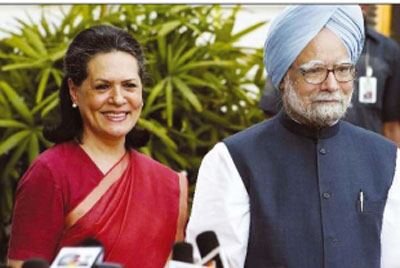
NEW DELHI: The third year report card of UPA-II projects a rosy picture of the Indian economy claiming steady economic growth, increase in per capita income and growth in foreign direct investment (FDI) in the country. The report card presented here today by the Prime Minister, Mr Manmohan Singh, shows a steep increase of about 55 per cent in FDI from 2010-11 to 2012.
It claimed that the growth is because the government has liberalised and rationalised FDI policy over the years to make it more investor friendly. FDI is now permitted in limited liability partnerships and up to 100% in single-brand retail trading. During April2011 to February 2012, FDI equity inflows were US $28.40 billion, an increase of 55% over the corresponding period a year ago, the report stated.
It said Central public sector enterprises (CPSEs) are major drivers of economic growth. In order to accelerate investment, 17 CPSEs have committed to a projected investment of more than Rs 1,30,000 crore in 2012- 2013, the UPA report card claims. On per capita income, the report card said it has increased from Rs 53,331 in 2010-11 toRs 60,972 for 2011-12.
Regarding country’s economic growth, the average annual growth rate of the economy during 2004-05 to 2011-12 was projected at 8.2 per cent per cent despite the global economic and financial crisis in 2007-09 followed by a slowdown in global economy in 2011-12. It, however, admitted that the expected growth of Indian economy was 6.9 5 per cent during 2011-12 in terms of GDP at factor cost at constant 2004-05 prices. It said the lower growth in this fiscal could be attributed to a slowdown in the global economy and tight monetary policy.
The report card on the government’s performance, however, could not hide inflation figure which stood at around 9 per cent during 2011. “Headline Wholesale Price Index (WPI) stood at around 9 per cent during 2011. It, however, moderated to 6.9 per cent by March 2012. CPI (Consumer Price index) inflation for major indices fell below 7 per cent in December 2011 and fell further in January-February 2012,” the report card stated.
It claimed that the high inflation is because of increasing global commodity prices mainly because of persistently high crude petroleum prices. Primary food article inflation has been a cause of serious concern. However, this year average food inflation declined significantly to 7.28 per cent from average levels above 15 per cent in earlier years.




Be the first to comment